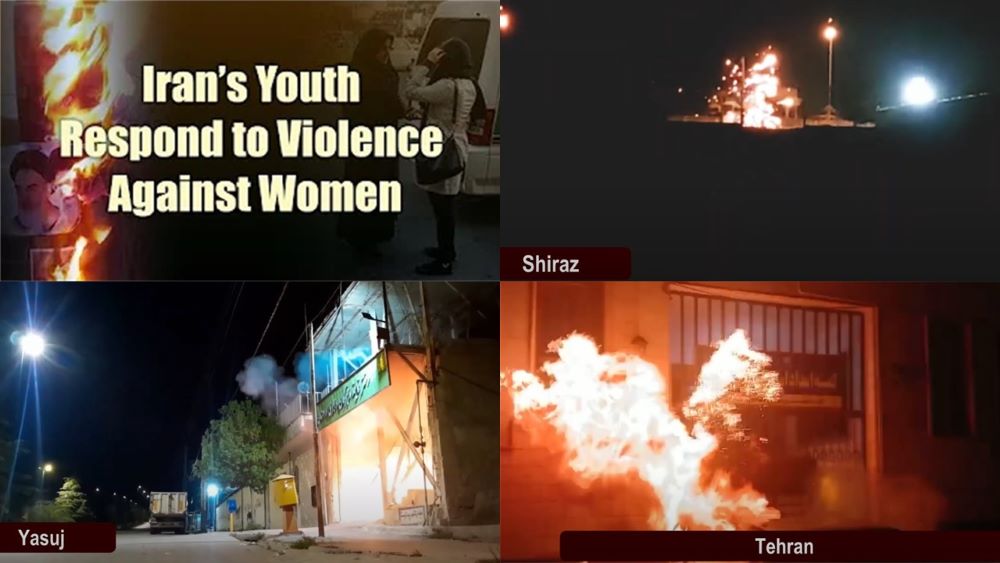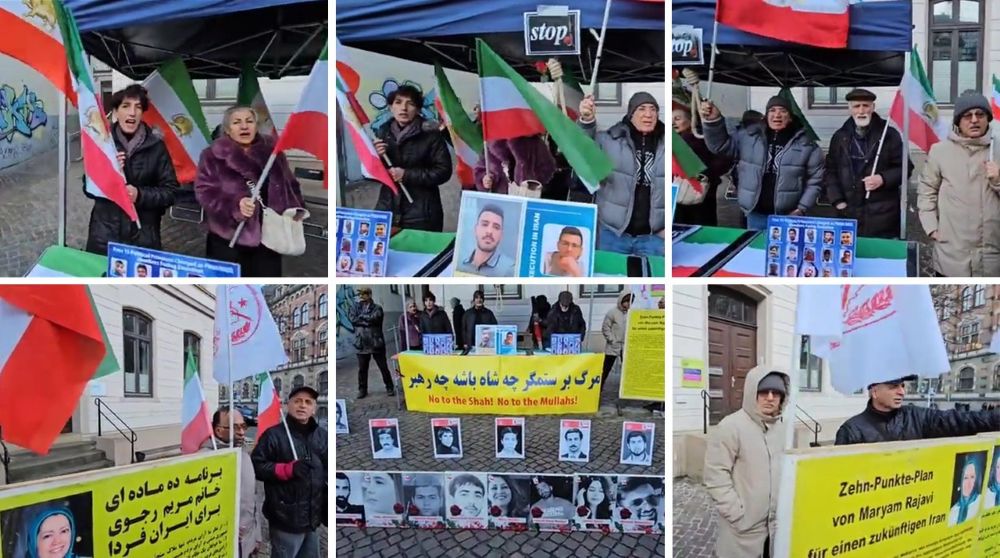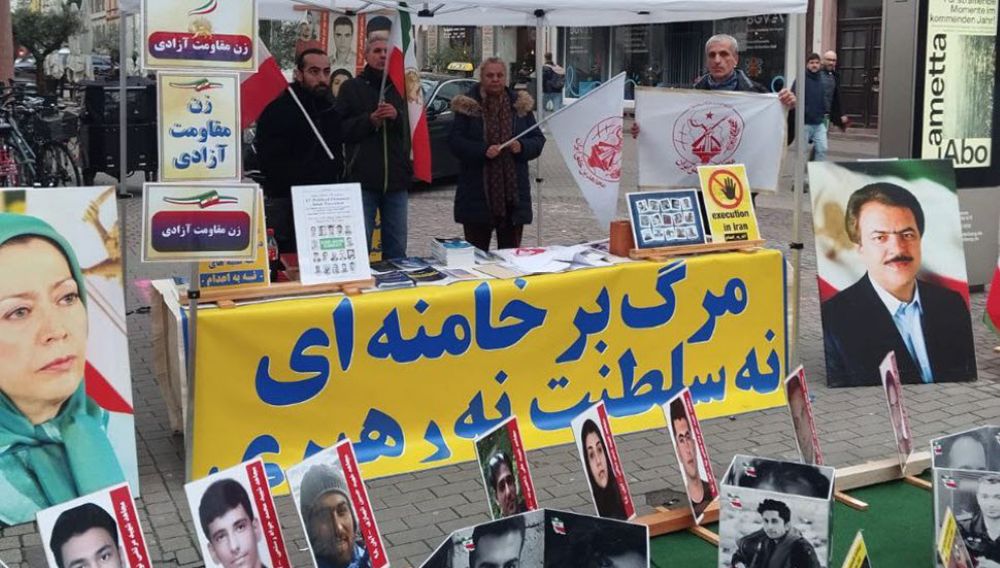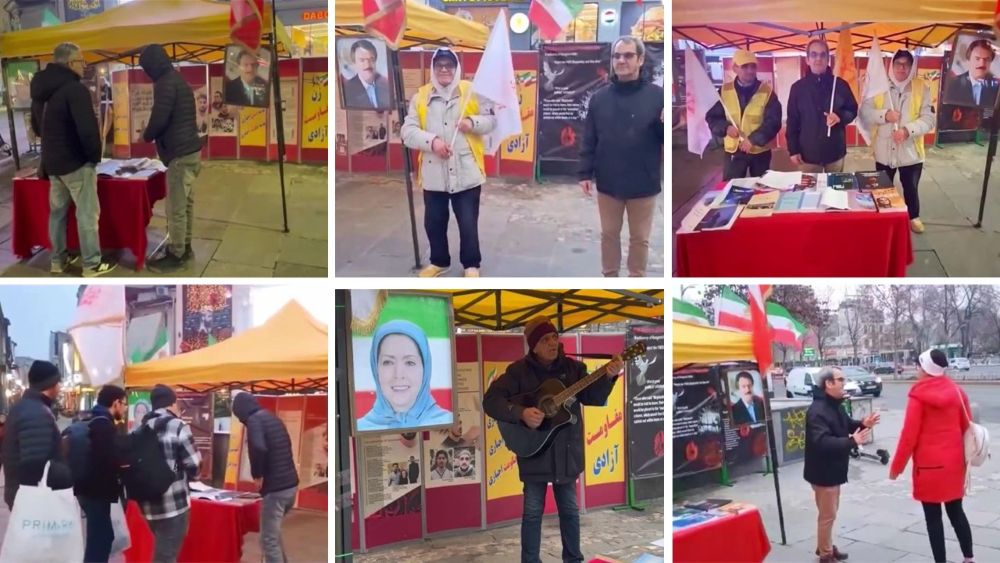
Iran’s regime has engaged in a series of new repressive measures against women and girls to quell protests and hide its own setbacks and failures. In recent days, there have been many reports and videos of security forces harassing women and girls who do not comply with the regime’s misogynistic hijab rules.
But in defiance of the regime’s repressive actions, Iran’s rebellious youth are targeting regime symbols and centers that are especially affiliated with the regime’s suppressive apparatus.
On April 16, rebellious youth in Tehran attacked the Quds Complex, affiliated with the regime’s apparatus for suppressing women and girls. The sounds of explosions were heard in the surrounding area as the rebellious youth made it clear that they will not allow the regime to carry out its repressive policies without consequences.
Also on April 16, the rebellious youth in Yasuj, southwest Iran, attacked the office of Sharafeddin Malek Hosseini, a regime official involved in the suppression of women. The explosion set fire to the entrance of the building, sending a warning to regime officials who think they can intimidate the women and girls of Iran and discourage them from pursuing their aspirations for freedom and equality.
On April 13, rebellious youth in Shiraz, southern Iran, targeted the naval base of the Revolutionary Guards with explosions. At the same time, the youths in Kermanshah, western Iran, attacked the local complex of the Khomeini foundation, an infamous suppressive center. And in Talesh, northern Iran, another regime building was targeted in response to the new wave of repressive measures by the regime.
The regime’s new set of rules came into effect on April 13. The new regulations give free rein to the regime’s security forces to arrest, fine, and punish anyone who does not comply with the rules. The alarming violence caused by the regime’s forces has caused public outrage.
The regime’s violence is especially more intense against women because of their leading role in the struggle for freedom. In the past decades, thousands of women have laid their lives down to bring freedom to their country, and they have set an example for today’s young girls, who are refusing to be intimidated by the regime’s repressive measures.
The rebellious youth also responded to the regime’s violence against kolbars (porters), impoverished people in the Kurdish regions who transfer goods on their backs under very harsh conditions to make ends meet. There have been numerous instances of security forces arbitrarily opening fire on kolbars in border regions and killing and injuring them. In recent weeks several kolbars have been killed by the IRGC.
In response to this vicious treatment of the deprived kolbars, the rebellious youth targeted several regime centers, including the Khomeini foundation in Tehran, the office of the representative of Khamenei in Bam, and centers of fundamentalism in Kerman and Iranshahr.
The regime’s latest repressive measures come as it is facing major setbacks both in the region and inside Iran. The regime has suffered serious military losses in its continued warmongering efforts in the Middle East and its attempts to use the war in Gaza as a tool to further strengthen its hold on power. At the same time, the regime’s efforts to quell protests in Iran have failed. Protests consistently continue in different parts of Iran and across different segments of the society. And more importantly the regime’s efforts to marginalize the Iranian Resistance through propaganda and court cases have failed.
Today, the activities of Iran’s rebellious youth are the ultimate testament to the regime’s failure to quell the spirit of resistance and freedom in Iran.
As Iran’s regime implements its misogynistic hijab rules and suppresses women and girls who don’t comply, the youth respond by targeting regime centers of repression. pic.twitter.com/kgNOdBCWMy
— People’s Mojahedin Organization of Iran (PMOI/MEK) (@Mojahedineng) April 21, 2024



